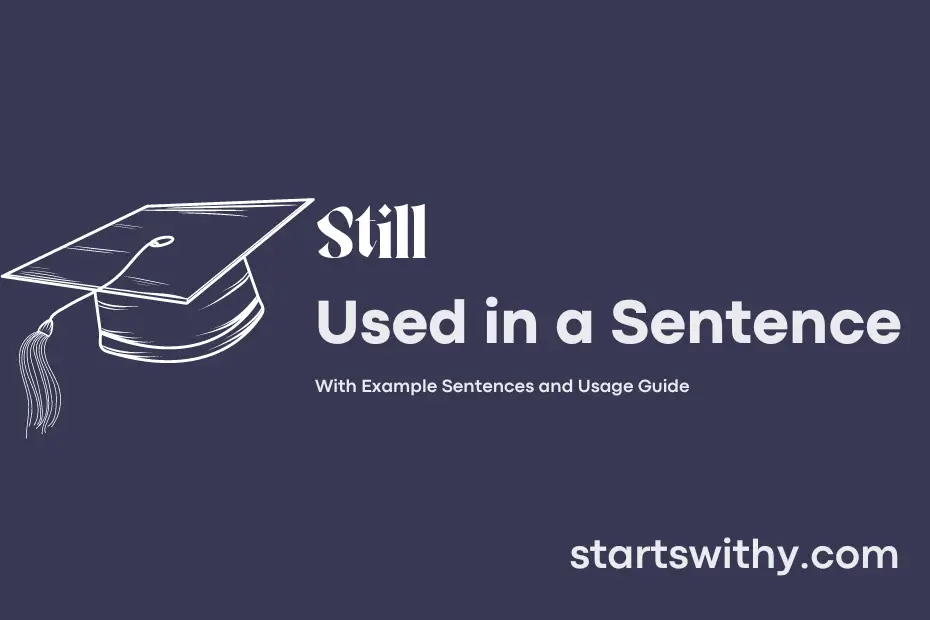Have you ever struggled with the proper usage of the word “still”? This versatile adverb can be a bit tricky to master, but with the right guidance, you’ll be using it correctly in no time.
“Still” is commonly used to indicate that a situation or condition remains the same despite other changes or actions. It can convey a sense of continuity, persistence, or ongoing relevance in a sentence.
7 Examples Of Still Used In a Sentence For Kids
- I am still waiting for my friend to come.
- The sun is still shining in the sky.
- I can still hear the birds chirping outside.
- The flowers are still blooming in the garden.
- My toy car is still missing.
- I am still hungry after eating my lunch.
- The clock is still ticking on the wall.

14 Sentences with Still Examples
- Still, struggling to understand the concepts after attending extra classes.
- I still have a lot of assignments pending to be completed.
- Still looking for internships to gain practical experience.
- Still undecided about my major and career path.
- Still trying to manage my time efficiently between classes and extracurricular activities.
- Still waiting for the exam results to be announced.
- Still searching for affordable accommodation near the college campus.
- Still haven’t found a study group to prepare for exams with.
- Still need to improve my communication skills for group presentations.
- Still seeking guidance from seniors for academic advice.
- Still need to renew my library membership to borrow books.
- Still adjusting to the new city and college environment.
- Still plan to join a club to enhance my networking opportunities.
- Still need to update my resume and prepare for campus placements.

How To Use Still in Sentences?
Still can be used in a sentence to indicate that something continues to be the case or is ongoing.
For example, “She is still studying for her exam” shows that the action of studying is continuing at the present moment. Another way to use still is to show that something has not changed despite a period of time passing. For instance, “He still enjoys playing soccer, even after all these years” conveys that the person has maintained the same interest in soccer over a long period.
Another way to use still is to express a contrast or surprise. In the sentence, “He said he would quit his job, but he is still working there,” the word still highlights the unexpected continuation of working at the same job despite previous intentions to quit.

Moreover, still can be used to emphasize the persistence of a situation. For example, “The problem is still unresolved” emphasizes that the issue persists and has not been resolved yet.
To effectively use still in a sentence, it is important to consider the context and how it enhances the meaning by emphasizing continuity, unchanged circumstances, surprise, or persistence. By incorporating it appropriately, learners can convey the continuous or enduring nature of an action or situation.
Conclusion
In conclusion, the phrase “still” is commonly used in sentences to indicate continuation or persistence of a state or action. Whether expressing an ongoing situation, a lingering feeling, or a resolute decision, “still” serves to emphasize the enduring nature of the subject being discussed. By incorporating “still” into sentences, writers can convey a sense of continuity, steadfastness, or even surprise at the persistence of a particular condition.
From expressing an unexpected outcome to underscoring an enduring quality, “still” proves to be a versatile word that adds depth and nuance to sentences. Its simple yet impactful presence can subtly shift the tone or meaning of a statement, making it a valuable tool for writers aiming to convey various nuances of time, emotion, or action in their writing.



